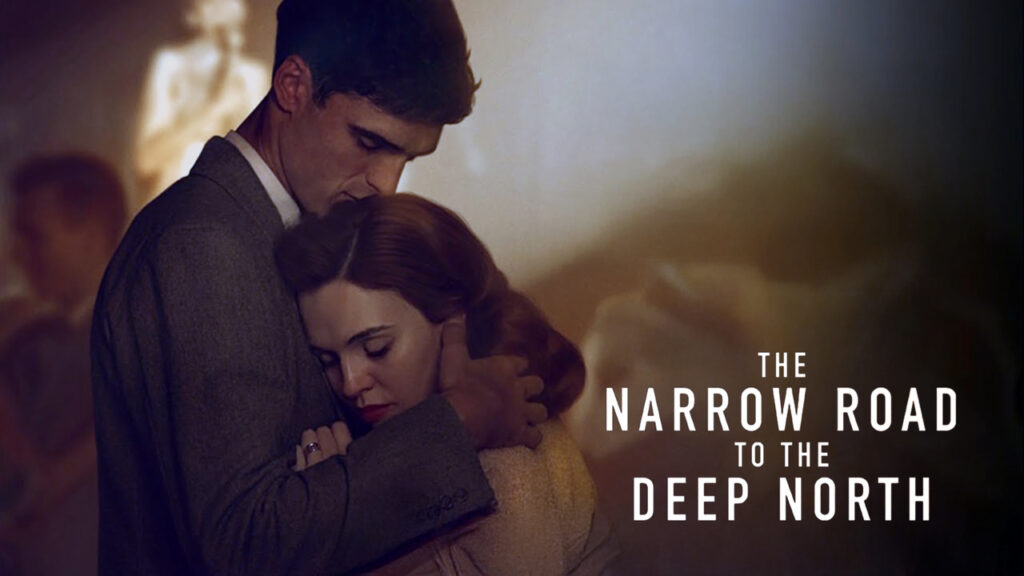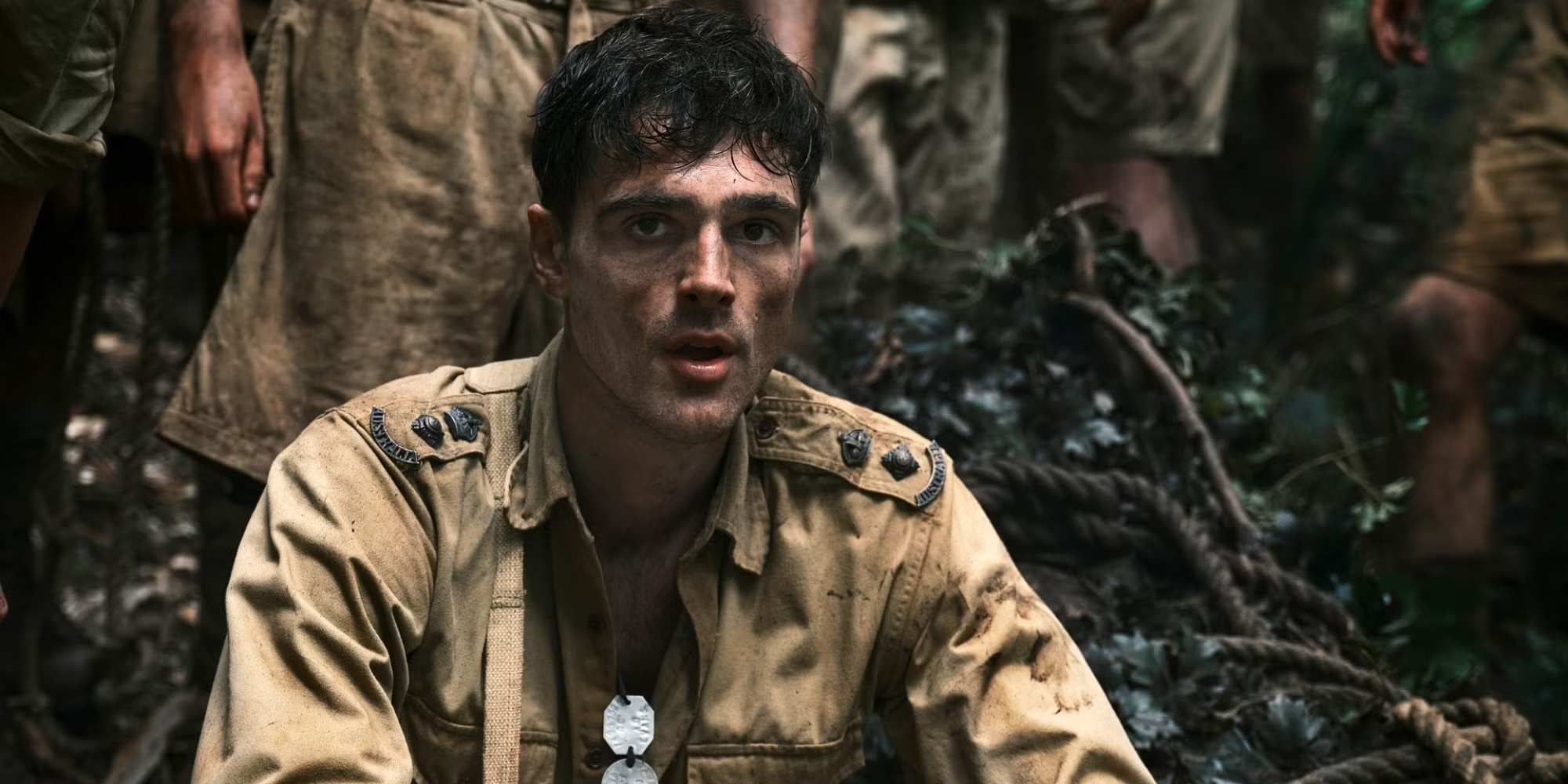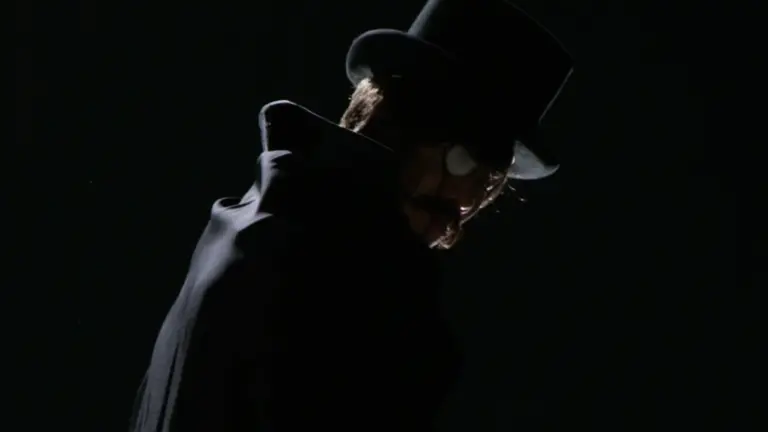An Intense, Unforgettable TV Journey Through War, Love, and Memory
In 2025, “The Narrow Road to the Deep North” stormed onto Amazon Prime Video, dropping viewers into an Australian drama with ambition and raw emotional power. The show is an adaptation of Richard Flanagan’s celebrated Booker Prize-winning novel and carries the weight of literary prestige. Helmed by director Justin Kurzel and screenwriter Shaun Grant, the project assembles a compelling cast: Jacob Elordi as Dorrigo Evans, Odessa Young as Amy Mulvaney, and Ciarán Hinds as the older Dorrigo. This is no ordinary war tale. Instead, it’s a narrative that snakes through the cracks of history, romance, memory, and pain.

Sweeping Storytelling Over Decades
Kurzel’s miniseries refuses to stick to one point in time. Three distinct periods unfurl: the soft light of pre-war love, the brutal darkness of a World War II Japanese POW camp, and the echoing aftermath as Dorrigo moves through life, haunted by both trauma and desire. So, the story bends and loops, challenging audiences to keep hold of the timeline, but rewarding them with emotional revelations. Central to it all, Dorrigo Evans lingers between his responsibilities as a military doctor and a secretive, complicated affair with his uncle’s wife, Amy. The effect is not only dizzying but also poignant and immersive.
Critical Reception: Universal Acclaim
So, how did critics respond? The show’s numbers speak loudly. Rotten Tomatoes registers the miniseries at a sky-high 100% approval based on eight reviews, with an average score of 8.3/10. Metacritic lands at 83 out of 100, marking a clear “universal acclaim.” Across mainstream reviews, one thing is certain: the series captured both hearts and minds.
But statistics only tell a fraction of the story. Critics dug deep, highlighting not only its technical prowess but the gravity of its performances and the pain that pulses through every scene. Across major outlets, the series got stamped as a remarkable, bold adaptation.
Standout Performances and Chemistry
Time and again, reviews circle back to Jacob Elordi. The Australian star becomes Dorrigo Evans, carrying the character from innocence to exhaustion. In The Guardian’s Peter Bradshaw’s words, Elordi offers a “fervent, focused” performance. He handles scenes that bristle with longing and those laden with the indignity of life during war. Odessa Young, as Amy, conjures a magnetic presence. Their chemistry crackles. You believe it – the forbidden nature, the aching loss just out of reach.
Meanwhile, Ciarán Hinds adds another layer as the older Dorrigo, bringing old wounds to the surface. Their work, together and apart, anchors the series in a kind of electric realism. Many have pointed out that the commitment in Elordi’s craft shines particularly in the physical transformation that comes with portraying a POW – a subject he’s discussed as both daunting and collaborative, requiring teamwork and grit.
Technical and Visual Mastery
Then, there’s the look and feel of the series. Critics across the board mention how cinematographer and production designer work hand in hand. The prison camps, set in the Thai jungle, chill the bones. Dust hangs in the air. Every shadow feels meaningful, every shaft of sunlight vital. The series makes use of light and darkness to reflect internal and external struggle, which adds depth and stark realism.
The design and score further root viewers in the world. Music lingers, shaping the emotional undercurrents. Small details – the thin clothes of prisoners, the relentless sweating and dirt – drive home the authenticity. You don’t doubt for a moment that you’re there, suffering and hoping alongside the characters.
Narrative Structure: Complexity as Both Asset and Challenge
What really sets this adaptation apart is its narrative ambition. It jumps through time, asking its audience to actively participate in piecing events together. Some might say it’s an emotional jigsaw puzzle. The show tosses linear structure aside, but in return it offers a richer dive into memory, regret, and the way trauma both fractures and fuses lives. For engaged viewers, every episode hooks unexpectedly, looping back and forth with both style and intention.
Some critics, though, have noted this non-linear approach isn’t for everyone. If you look away, even for a minute, the plot might leave you behind. Yet for those who stick with it, there’s a sense of discovery as the show peels back layers, sometimes circling themes before revealing the core.
Three Key Positive Aspects
- Spellbinding Performances: Jacob Elordi’s range as Dorrigo Evans carries the weight of the story’s pain, love, and adversity. Odessa Young, as Amy, proves a worthy partner in every sense, her performance shimmering with longing and heartbreak.
- Narrative Depth That Resonates: The series spins a tapestry that is both brutal and beautiful. It navigates romance and war without trivializing either, weaving themes together so viewers experience the full force of hope and cruelty intertwined.
- Immersive Visual and Aesthetic Choices: Authentic sets and intense cinematography bring the POW camps to life. Each shot tells part of the story. The haunting score floats beneath, swelling emotions and anchoring characters to their reality.
Three Key Negative Aspects
- Challenging, Nonlinear Structure: The time-hopping narrative keeps you on your toes, but sometimes it’s easy to get lost. For casual viewing, the show may feel tangled, with viewers struggling to lock into the right period or context.
- Relentless Emotional Intensity: The show drills into suffering – the agony, the starvation, the loss. Episodes are heavy. If you’re hoping for fleeting relief, few moments allow you to breathe. It can feel overwhelming to binge more than one.
- Limited Supporting Character Depth: Critics have pointed out that while the core cast is breathtaking, side characters lack arcs or depth. Their presence molds the edges of the main story, but viewers may wish for more insight or soul.
Deep Dive: Behind the Curtain and Beyond
The show isn’t just about what it puts on screen. Behind the scenes, Jacob Elordi discussed the heartache and physical challenge in interviews. He shed serious weight to authentically portray a starving prisoner. He did not do this alone; the project’s team orchestrated a careful, medically supported transformation, relying on constant communication.
The central romance, meanwhile, manifests in both grand gestures and stolen moments – never cheap, always costly. Elordi and Young dig into the shame and joy of a love that can’t exist in the sunlight. Their performances fuel the story with tensions that threaten to boil over, sometimes in moments as simple as a glance or the brush of a hand.
Indeed, director Justin Kurzel and writer Shaun Grant stand careful not to romanticize trauma. They focus on the ripple effects – showing how love and war bleed into every future decision. The show asks: how do you find tenderness amidst devastation? It offers no simple answers. Instead, it shows detachment, despair, community, and resilience, sometimes all within a single scene.
Reactions From Reviewers and Audiences
Reaction among professional critics remains near-universal in its praise. Review after review notes how “The Narrow Road to the Deep North” transforms well-trodden genres into something more: a psychological excavation, an elegy for wounded hearts, a brutal poem.
Yet, snippets of constructive criticism pop up. Some reviewers, like the one at The Playlist, remark that complexity and the focus on the protagonists leave some stories untold. Others, including The Daily Telegraph, issue content warnings – emphasizing that the series can feel emotionally battering. In both cases, it becomes clear the show’s ambitions are also its sharpest edges.
Verdict: The Narrow Road to the Deep North BRNG?
Does this series bore? The simple answer – no. “The Narrow Road to the Deep North” won’t put you to sleep. In fact, you’ll find your pulse spiking more often than not. But it isn’t an effortless viewing experience. The emotional intensity and non-stop suffering, paired with a jigsaw narrative, may prove tough for some. Still, viewers who crave rich, adult storytelling – not afraid of scars and shadows – will cherish what this series achieves.
If you come for easy escapism, look elsewhere. But if you crave meaningful drama, this miniseries stands as a new high mark in prestige TV. Authentic, performed with rare power, constructed with uncommon care – none of it dull.
Final Score: 9.2
And so, “The Narrow Road to the Deep North” stands, a testament to storytelling that rattles the soul and refuses to fade quietly.





